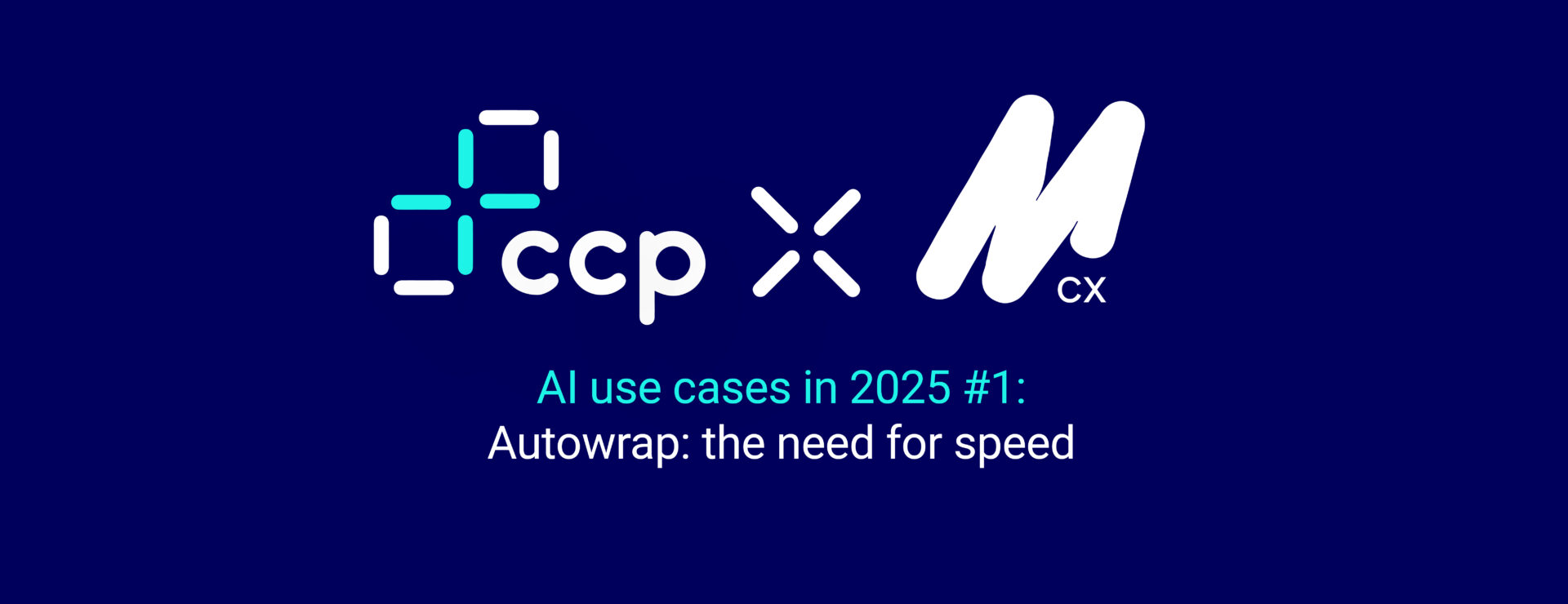
Summarising calls takes time – anywhere from 10-30% of the call. And agents are almost always under pressure to get the task completed in as little time as is humanly possible to meet AHT and wait targets. This often translates to errors or even missing data. Which not only makes it hard for future agents to follow the story, it can be a regulatory challenge too.
AI-driven autowrap and summarisation tools are helping to alleviate this burden by automating the process, allowing businesses to cut handling times and improve CRM accuracy. According to Jimmy, it’s one of the easiest applications of AI a contact centre can implement.
What is the AI doing in autowrap?
Autowrap and summarisation technology uses natural language processing (NLP) and machine learning to transcribe customer calls in real time. As calls progress, key details such as issues raised, resolutions, and next steps are captured automatically. This eliminates the need for agents to manually document call details, both reducing errors and freeing up time for more customer-centric tasks.
Key Benefits: Time and Cost Savings
By reducing the time spent on manual transcription, businesses can lower wrap times by 50%, which translates to reducing handling times by 5-15%. For a contact centre with 200 agents, taking the mid-point of 10%, this could result in a reduction of up to 20 FTEs, and delivering a 2-3X ROI from day one.
How you take this benefit is then your choice:
a) A productivity gain, even through natural attrition
b) A service improvement by reducing wait times or improving service, with longer call times to allow for better first contact resolution
c) Reinvest in more value driving AI use cases to build maturity
Call Summary Accuracy
With manual transcription, there is always the risk of errors or omissions. AI-driven solutions eliminate these risks by automatically capturing the most relevant data from each conversation, improving both the consistency and quality of CRM records.
Increased accuracy has a number of benefits, whether you run a regulated business or not. First is in future contacts, whether you met a first contact resolution goal or not. Any future calls where a customer refers to a previous call – and reasonably expects there to be some level of ‘corporate memory’ – can be shortened by avoid any lengthy re-explanations of what has gone before. Not only does this provide a future productivity gain, it makes for a far better customer experience too. So even at use case 1, we are already facilitating value generation through slick customer processes that avoid typical customer frustrations, as well as productivity.
What’s more, the data is clean, reliable and available for future analysis and QA. Look out for an article on use case 2, Auto QA, for more on that subject.
When building a business case, these are important considerations; it’s important to remember that your baseline probably isn’t perfection. And so your quality uplift may be greater than you have otherwise anticipated.
Easy Integration: No Overhaul Required
While it is undeniably desirable to integrate Autowrap technology into CRM or policy admin systems, it’s not a pre-requisite to start making these gains. An agent – dubbed the ultimate API in our recent whitepaper– can easily check through the summary, make any necessary amendments if you require it (your benchmark of what is good enough will depend on your business) and copy and paste it in. They’re already used to connecting disparate systems and will be working where you want to capture it anyway.
This means that businesses can buck the trend of AI project failure and quickly adopt the technology with minimal disruption to existing workflows. Once the ‘short, sharp’ solution is working, of course you can consider and implement the deep integrations to automate the task, but you will be most of the way there without it.
Enhancing Agent Experience and Customer Outcomes
As alluded to earlier, the benefits aren’t just about reducing operational costs—they also enhance both the agent and customer experience. By automating mundane, and often poorly executed tasks like call transcription, agents are free to focus on more valuable work, such as problem-solving and building customer relationships.
This not only boosts job satisfaction – which in itself may then also translate to tenure, sickness and recruitment gains – it also contributes to higher-quality customer interactions. Look out for use case 5, ‘Agent Assist’ for more on this topic.
Measuring Success
For any AI implementation, it’s important to measure its success as this will build the case for future implementations. Whether that’s headcount, resource allocation or the gamut of other contact centre KPIs.
In summary, the benefits are:
1. Immediate productivity gains of c. 10% of agent all handling time
2. Improved accuracy of note taking
3. Customer satisfaction gains from better corporate memory and more attentive agents
4. More time available for valuable conversations
5. Employee satisfaction gains – happier agents, longer tenures, less sickness, reduced recruitment
6. Regulatory compliance improvements
7. Easy and scalable implementation to shorten implementation timescales and increase AI success
8. Ability to re-invest gains in building AI maturity
Ultimately, accurate (enough) autowrap is an obvious win in any contact centre.
To find out more about how CCP can help you make the right technology choices, read more here or get in touch.
This series of articles is drawn from our webinar with Jimmy Hosang, CEO and co-founder at Mojo CX. We explored seven key use cases for AI in contact centres, starting from the easiest productivity gains to value generating applications. You can find a summary of all seven use cases here, or watch the webinar in full here.




